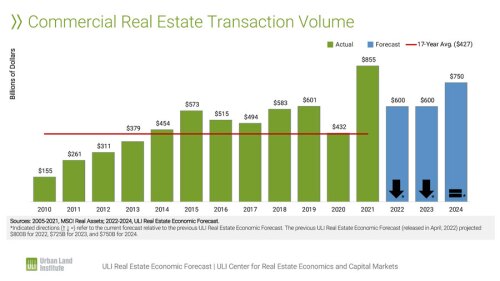In a recent webinar hosted by ULI Europe with the Instant Group, real estate experts discussed the current state of the global office sector.
The “ULI Europe Bridging the Occupier-Landlord Gap for the Future of Workspace Report Launch Webinar” shed light on how changing occupier behavior and broader macroeconomic trends are affecting the demand for office space.
Simon Chinn, vice president of research and advisory services, Urban Land Institute, and James Rankin, head of research and insights, Instant Offices Limited, introduced the new research report, Bridging the Occupier Landlord Gap for the Future of Workspace.
“If we consider for a moment, some of the activities that were restricted during the pandemic or lockdowns, things like going to a restaurant or attending major sports events or concerns or the theater, all of these social, in-person activities are not back to their pre-pandemic levels…While attendance to the office varies in many sectors and cities, office occupancy really remains well below its pre-pandemic levels,” said Chinn.
“Our research shows that while we all probably feel that the industry has gone through huge amounts of change over the last two years, in actual fact, it was just 16 percent% of [asset owner’s] that felt their portfolios today are aligned with business objectives and strategy. That’s an indicator that we haven’t really seen anything yet,” said Rankin.
The panel, moderated by Joe Brady, chief operating officer, Americas, Instant Offices Limited, and featured Remco Daal, president of Canadian real estate, QuadReal Property Group; Ronen Journo, senior managing director, head of European management services, Hines Europe Ltd; and Lisette van Doorn, chief operating officer, Europe, Urban Land Institute.
The panel emphasized that as the real estate industry adjusts to a post-lockdown world, occupiers and landlords must work together to evolve with the changing demands to the office.

Clockwise from upper right: Joe Brady, chief operating officer, Americas, Instant Offices Limited; Lisette van Doorn, chief operating officer, Europe, Urban Land Institute; Remco Daal, president of Canadian real estate, QuadReal Property Group; and Ronen Journo, senior managing director, head of European management services, Hines Europe.
Brady shared his positive outlook on the evolving office sector, saying, “The office is dead, right? Well, that’s cute clickbait to put out there, but by the way, we saw the same thing 15, 20 years ago from retail, saying the store is dead. Far from it.”
“I actually think that the occupier and the landlord are far more aligned than sometimes we think,” said van Doorn, “Obviously, everybody needs to watch their own P&L [profit and loss], and that’s where the friction comes. But I think the part that’s been struggled with is the employee…How do we get those employees aligned with the bigger corporate interest? And what role does the office play in that?”
“Irrespective of whether you are the investor, the developer, the operator, the manager, or the occupier, you are dealing with human experience, and therefore we very much need to focus on not only the human experience, and as a result of that, how that produces productivity and collaboration…You’re dealing with consumers, no longer just a B2B transaction,” shared Journo.
There is a clear flight to quality in the market being recognized within the sector. Daal shared, “At no point, in you know, as long as I can remember, has the differential between B and C assets and A assets been greater in vacancy…Typical would be 250, 300 basis points in occupancy between the best buildings and the B and C. Today it’s 700.”
To learn more about what other occupiers and landlords are saying about the changing value of the office, dive deeper into Bridging the Occupier-Landlord Gap for the Future of Workspace, the latest research report from ULI Europe.





